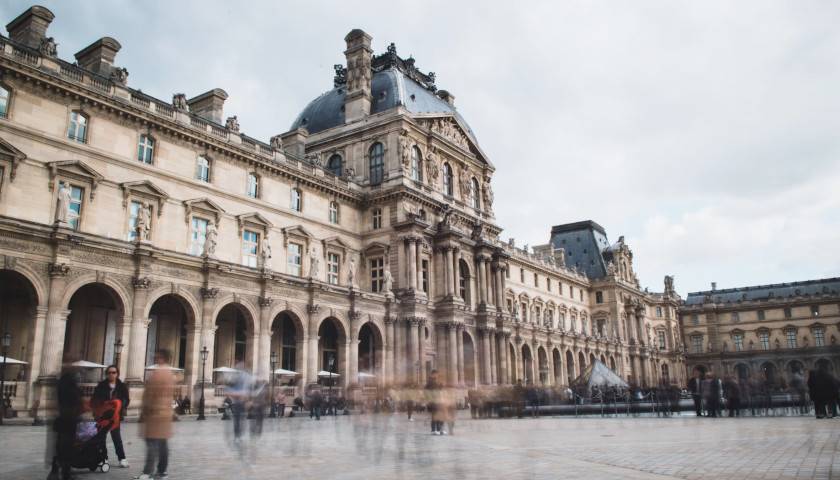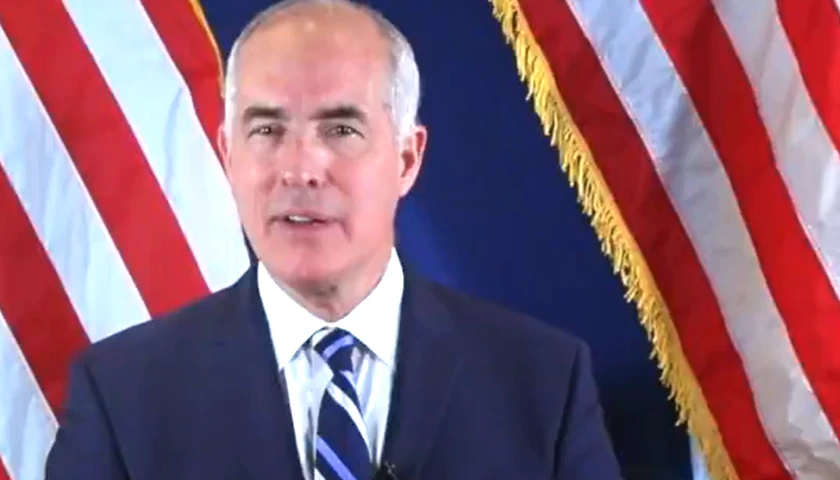by Walker Larson
Former Trump official William Wolfe recently lamented the neglect steadily encroaching his local grocery store. “Let me tell you: I’ve never seen stores in such bad shape as they are now,” he wrote. “No one staffing the main check out lines, massive line for the self check outs, stores messy, items unstocked. … It’s like watching a country decline in real time.”
Wolfe’s tweet resonated with many Americans, garnering interactions from nearly 1 million people. Here were two of the responses: “I said nearly those exact words today to my husband when I came home from my local Kroger market” and “The fall of an empire happens gradually, and then all at once.”
Certainly, grocery stores aren’t the only public spaces in decline. Dirtiness, neglect, crime, and ugliness afflict many communal areas throughout the country. After noting the rise in crime in various major U.S. cities, Joe Kotkin, Executive Director of the Urban Reform Institute, gives this harrowing description of Los Angeles:
Some of these cities have also become centres for homelessness, open drug markets and incubators of all sorts of diseases. Los Angeles city workers have been infected with typhus … and some now demand elaborate protective gear when asked to hose down the putrid streets. There are already increased cases of leprosy in Los Angeles. Some have suggested that, thanks to the resurgence of rats, the return of bubonic plague may be imminent.
Most concerning of all, perhaps, is the phenomenon of mere emptiness. People do not gather together in public as much as they once did. The neglect of sanitation and beauty in our commons reflects our devaluing of those spaces.
In “The Fall and Rise of Great Public Spaces,” Jay Walljasper points out that—only a century ago—streets and public gathering places were constantly full of people. This was partly because of the different structure of society: With cramped spaces, no cars or refrigerators, no cell phones, and no TVs, it was necessary and natural to gravitate toward shared places for entertainment, sustenance, exercise, and socialization.
But with the coming of the 20th-century and industrialization, “cars took over the streets … putting many more places within easy reach but making walking and biking dangerous. Towns and cities spread out, with many merchants moving to outlying shopping malls. Telephones, refrigerators, television, computers, and suburban homes with big yards transformed our daily lives. People withdrew from the public realm. No longer essential, public spaces were neglected.”
Walljasper outlines the many societal benefits of these spaces, saying that they were traditionally used to meet, talk, court, exercise, read, eat, shop, and generally live out human life in union with others. He goes so far as to say, “the future of the human race depends on public spaces. It’s where young women meet and court with young men—an essential act for the propagation of the species.”
Throughout history, too, common spaces were essential. In ancient times, the Roman Forum, a plaza situated between the Palatine and Capitoline hills, was the beating heart of the Roman Empire. Some of the most famous Roman buildings, including the Colosseum, Curia, and Arch of Titus, encircle this open space. Most of the city’s vital activities—including public meetings, legal proceedings, elections, religious and state ceremonies, spectacles, gladiator combats, shopping, and trading—occurred in these spaces.
To stroll through the vista of the Forum in the days of Rome’s glory must have been a thrilling experience. The place burst with glittering sights, sounds, and smells; was flooded with swells and masses of people; and overflowed with bickering, chatting, speech giving, singing of scattered songs, and the tramping of Roman soldiers. Political, religious, economic, and social life coalesced and developed around the Roman Forum.
Similarly, the mead-hall of early medieval Anglo-Saxon and Scandinavian culture served as a crucial gathering place for its people. It was the “meeting house”—the place where great central fires crackled, roasted spits of meat and tumblers of strong drink were shared, commercial and social transactions were solidified, and rituals were used to mark the important moments of human life and society. This great feasting hall would have consisted of a single, enormous room that could fit the lord’s followers and host the community for socialization.
In the Anglo-Saxon poem Beowulf, the hall becomes a bright light of human solidarity, art, and community amid the gloom of a desolate and dangerous world. Embodied in Danish King Hrothgar’s great hall, it is the literal and figurative communal hearth that keeps cold, darkness, and savagery at bay. As a symbol of all that’s good in human communal life, the hall becomes an object of hatred to the demon and outcast Grendel. Grendel cannot stand art or feasting—those wonderful high points of a culture. In Seamus Heaney’s translation of Beowulf:
Then a powerful demon, a prowler through the dark,
nursed a hard grievance. It harrowed him
to hear the din of the loud banquet
every day in the hall, the harp being struck
and the clear song of a skilled poet
telling with mastery of man’s beginnings.
In his hatred for true culture, community, art, celebration, Grendel attacks the place that symbolizes and facilitates these things. He slaughters those within, and—for 12 wintry years—the hall is silent. It becomes a jumble of broken benches and crockery. Empty of human gathering, connection, and civilization, it is the solitary haunt of a shadowy beast. The debasement and befoulment of the public space is both the cause and the sign of the Danes’ cultural crisis.
Now, in 21st-century America, are we not in a similar situation to the Danes? It’s easy to find our own empty mead-halls, overtaken by anti-cultural forces. The danger and disarray of our public spaces is both a cause and a result of our disconnection from one another.
And yet what might be done? Walljasper quotes architect Jan Gehl: “Cultures and climates differ all over the world, but people are the same. They will gather in public if you give them a good place to do it.”
Of course, healing the division between people will require much more than just pleasant public spaces, but recreating the physical framework for human connectivity is a big step.
To give an example, my parents once purchased a rural property with a barn in excellent condition. We remodeled the hay loft of the barn, running electricity to it and adding a stage, wings, storage, and a bar so that it could become an event center—a place to bring local people together.
And it has. This old barn has hosted a wedding reception (mine), barn dances, concerts, a harvest fest, and four separate Shakespeare plays. By making this attractive and practical space, my family has been able to cultivate a little bit of local culture—and even some marriages! Two couples I know met primarily through events inside the old barn.
Though it’s a very small project, it may offer some inspiration to others. We must value community, and we must create or revive attractive spaces in which communities can thrive.
– – –
Walker Larson teaches literature at a private academy in Wisconsin. When not in the classroom or spending time with family and friends, he blogs about literature and education on his Substack The Hazelnut.




